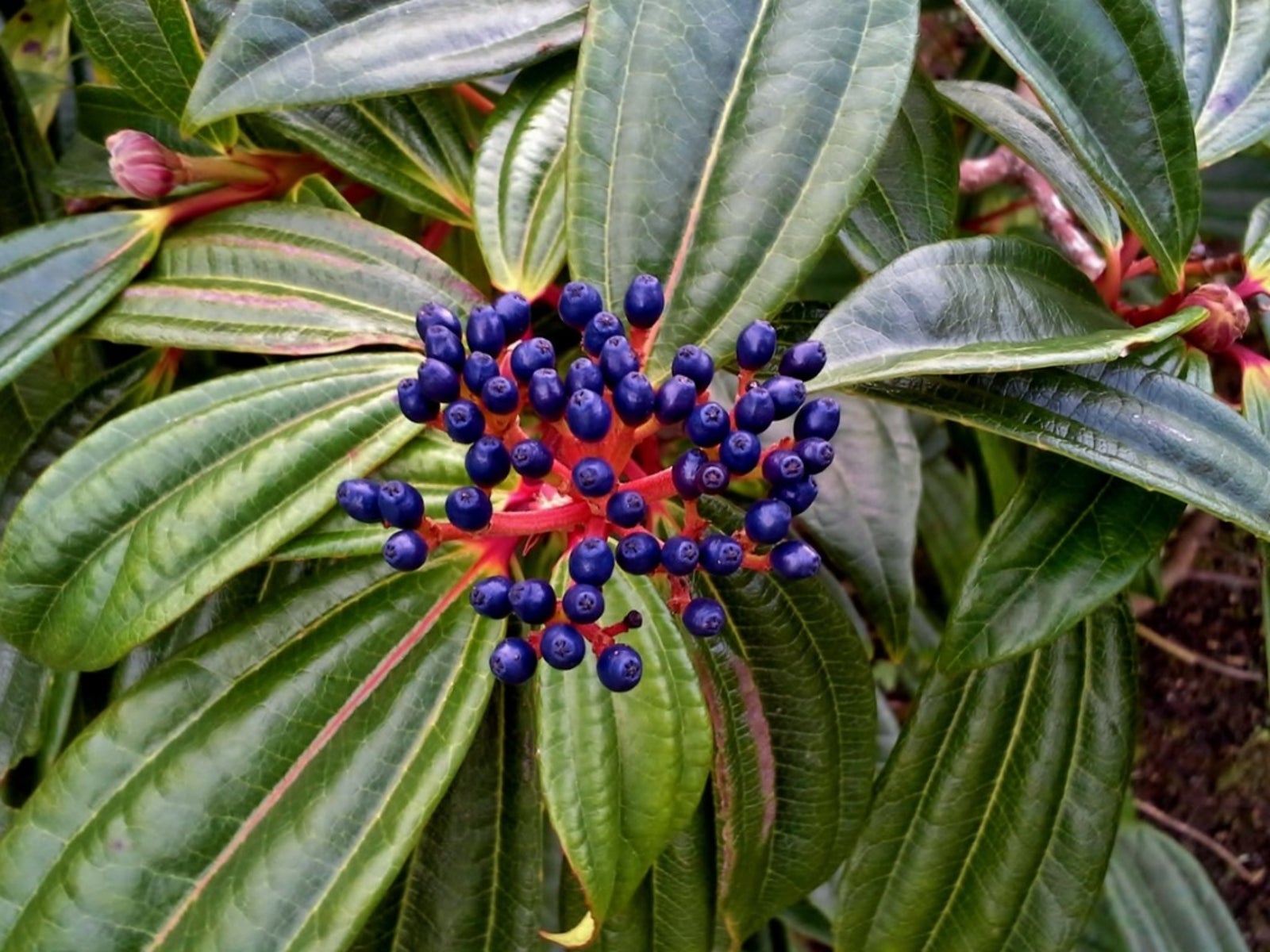David Viburnum Care – Tips On Growing David Viburnum Plants


Native to China, David viburnum (Viburnum davidii) is a showy evergreen shrub that displays attractive, glossy, blue green foliage year-round. Clusters of small white flowers in spring give way to colorful, metallic blue berries that attract songbirds to the garden, often well into the winter months. If this has piqued your interest, read on for more David viburnum information.
Growing David Viburnum Plants
David viburnum is a small rounded shrub that reaches heights of 24 to 48 inches (0.6-1.2 m.) with widths about 12 inches (31 cm.) more than the height. The shrub is evergreen in USDA plant hardiness zones 7 through 9, but it may be deciduous in the northern edges of that range. Growing David viburnum plants isn’t difficult, as this is a hardy, low-maintenance plant with no serious threat from pests or disease. Plant at least two plants in close proximity, as female plants require a male pollinator in order to produce berries. David viburnum is easy to grow in average, well-drained soil and either full sun or partial shade. However, the shrub benefits from a location with afternoon shade if you live in a climate with hot summers.
David Viburnum Care
Caring for Viburnum davidii is also uninvolved.
- Water the plant regularly until it is established. From that point, water during extended periods of hot, dry weather.
- Fertilize the shrub after blooming using a fertilizer formulated for acid-loving plants.
- A layer of mulch keeps the roots cool and moist in summer.
- Trim as needed in late winter or early spring.
To propagate David viburnum, plant seeds outdoors in autumn. David viburnum propagation is also easily accomplished by taking cuttings in summer.
Is David Viburnum Poisonous?
Viburnum davidii berries are mildly toxic and may cause stomach upset and vomiting when eaten in large quantities. Otherwise, the plant is safe.
Gardening tips, videos, info and more delivered right to your inbox!
Sign up for the Gardening Know How newsletter today and receive a free copy of our e-book "How to Grow Delicious Tomatoes".

A Credentialed Garden Writer, Mary H. Dyer was with Gardening Know How in the very beginning, publishing articles as early as 2007.
-
 4 Superfast Composting Methods: Turn Waste Into Garden Gold In 30 Days Or Less
4 Superfast Composting Methods: Turn Waste Into Garden Gold In 30 Days Or LessTry the fastest composting methods to turbocharge your pile and transform kitchen scraps and garden waste into finished compost in just a few weeks.
By Mary Ellen Ellis
-
 Best Spider Plant Soil – Complete Soil Guide And Expert Tips For Keeping Plants Happy
Best Spider Plant Soil – Complete Soil Guide And Expert Tips For Keeping Plants HappySpider plants are fun and easy plants to grow, but what is the best soil for a spider plant? Selecting the right soil is important so they can thrive.
By Bonnie L. Grant